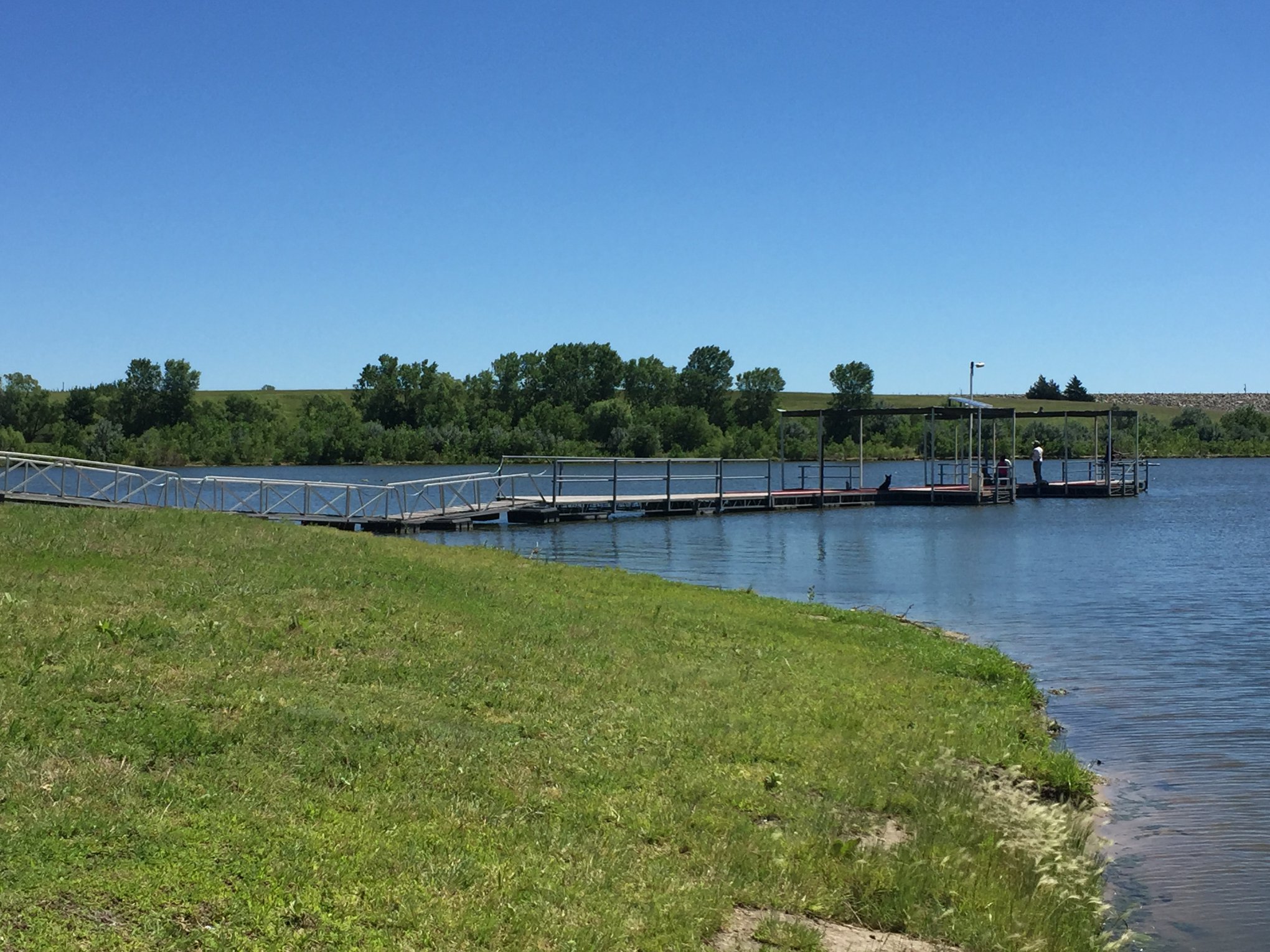
Phillips County Review
PHILLIPSBURG — Despite being caught up in a half-decade-long drought in recent years as well as having been under drought watch as recently as last summer, “The Little Great Lakes” of the Solomon and Republican River watersheds are not only doing just fine, with just one exception they are over capacity.
The Little Great Lakes (a phrase coined ca. 1980) include Kirwin, Sebelius, Harlan, Webster, and Waconda reservoirs.
Continuing its half-century tradition of going through periods of feast and famine, over the course of recent months Phillips County’s Kirwin Lake levels have continued to rise, and was at 108 percent of its capacity as of March 31, 2019.
As recently as August 31, 2016, Kirwin held only 30,384 acre feet of water, which was 31 percent of its 98,154 acre feet capacity.
Three days after that date massive downpours 60 miles west of the lake dumped a deluge of water into the Solomon River and Bow Creek drainage basins, with up to 14 inches falling in Norton and Graham counties in a few hours time.
By the end of September of 2016 the lake level had jumped all the way up to 69,704 acre feet, putting it at 74 percent of capacity.
Throughout the following 30 months Mother Nature has continued to provide a healthy dose of precipitation exactly where it needs to be to feed the reservoir.
So healthy, that as of the end of March 2019 Kirwin was holding 105,788 af of water, putting it a good bit over its 98,154 af capacity. And, it’s worth noting, that number is up from 101,173 af just 30 days earlier, when Kirwin was at 103 percent of capacity.
Throughout the month of March, an average of 159 cubic feet per second of water flowed into the lake per day according to monthly reservoir statistics provided by the U.S. Bureau of Reclamation.
But as good as March was for Kirwin, it ranked in fourth place for inflow compared to Waconda, Harlan, Sebelius and Webster.
In comparison, Harlan had a very healthy inflow of 958 cubic feet per second per day, while Waconda had a veritable tidal wave coming in, with a whopping daily average of 1,716 cfs.
Regarding daily inflows, Webster averaged 187 cfs, while Sebelius had just 47 cfs.
Speaking of Sebelius, out of all of the Little Great Lakes that one in Norton County continues to be the most challenged. With a total possible conservation storage capacity of 34,510 acre feet, as of the end of March Sebelius held 20,197 af, putting it at 59 percent of capacity.
The trend at Sebelius is looking excellent, however, with it being up from 50 percent full just 30 days earlier and a very anemic 41 percent a year ago.
Webster Reservoir in Rooks County has been faring a good bit better. As of March 31, that lake was 104 percent full. With a total conservation storage content capacity of 76,157 af, it stood over and above that number at 79,091, which is up five percent from 30 days earlier but down three points from a year ago.
Main Street Media issues this local reservoir capacity report once or twice a year. And because of Waconda Reservoir’s size and its consistency in maintaining high water levels, usually when we get to this point we annoint it as being the 800 pound gorilla of the Little Great Lakes.
With Waconda Reservoir sitting in Mitchell County at the edge of a slightly different climatic region and being fed by multiple rivers and creeks, as well as a relatively major constant-flowing spring, in recent years that lake has been able to maintain, with little difficulty, its status as being one of the largest in the state of Kansas.
With a total conservation storage capacity of 219,461 acre feet, as of the end of March 2019 Waconda held 241,452 af, which is 110 percent of capacity. That is up 16 percent from 207,027 af just one month earlier, when it was 94 percent full.
Coincidentally, 12 months ago Waconda was also exactly at 207,027 af/94 percent full.
So nothing has changed in regard to the solid attributes of Waconda, which continues to deserve the 800 pound gorilla title. But if Waconda is 800 pounds, then that must make Harlan Reservoir weigh a ton this year.
Just a few miles across the state line north of Phillipsburg, the local popular summer past time of tubing down the Republican River below the Harlan County Reservoir should be the best in years since the lake is fully 119 percent of capacity. The amount of water being held, coupled with court rulings relating to Kansas and Nebraska water compacts, will be resulting in major releases downstream this year–good news for tubers.
Starting out the month at 88 percent capacity, by the end of March 2019, continuously receiving water inflows due to massive Nebraska flooding resulted in Harlan holding 333,567 acre feet of water, which far exceeds its 314,111 af official storage content capacity.
Due to that regional flooding, Harlan rose 54,813 af in just one month. That’s a 31 percent increase in 31 days, and was so substantial it represents a total inflow that would have filled the entirety of Sebelius Reservoir two times over in just five weeks if it had taken place 40 miles to the southwest.
That also is a huge overall increase from just one short year ago, when Harlan was holding 243,232 acre feet of water and was at just 77 percent of capacity.
— Republished with permission
